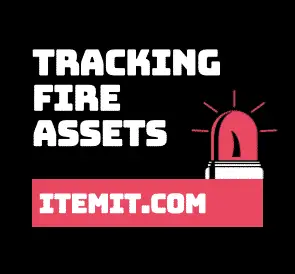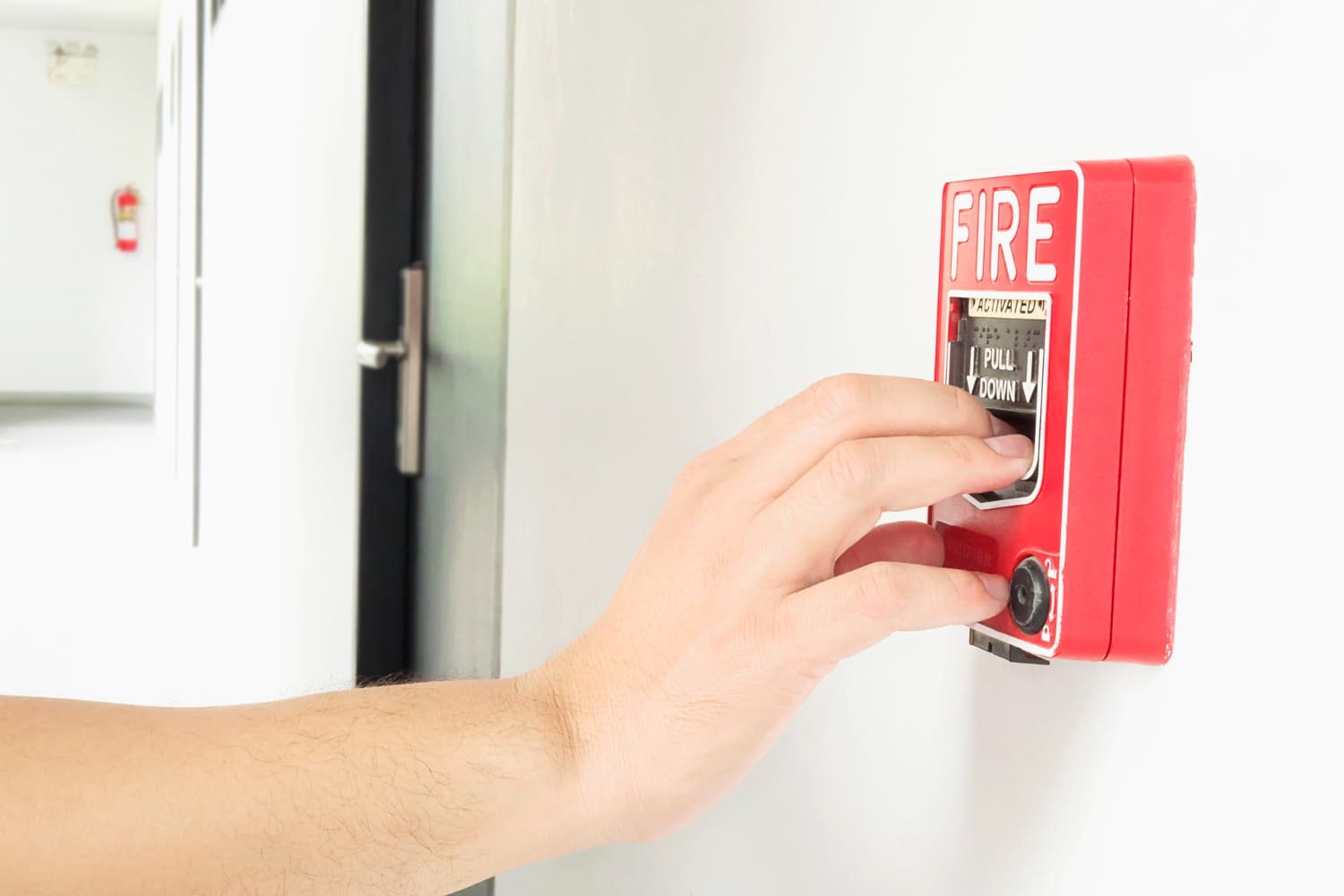
When it comes to fire safety assets and, ultimately, the safety of people, there is no room for shortcuts. The tragic events of the Grenfell Tower fire highlighted the critical need for effective fire asset tracking and maintenance to safeguard lives and properties.
Why Is it So Essential to Track Fire Assets?
The need for precise asset tracking in fire safety became even more evident as we explored the systemic issues surrounding incidents like Grenfell. At itemit, our core expertise lies in efficiently tracking and monitoring the condition and status of various critical assets. Leveraging this expertise, we developed a system tailored to the specific needs of fire safety and compliance.
Our bread and butter at itemit is keeping track of and monitoring the condition and status of different types of assets. This includes all sorts of assets from bakers’ bread baskets to drills and excavators relied upon by construction companies, right the way through to tracking the whereabouts of navigational systems on a fleet of 33 ships. So, when we researched more into the events that led to the Grenfell Fire, we were shocked to see that so many fire and compliance assets had not been correctly tracked, monitored, and maintained.
What’s the Solution to Tracking Fire Safety and Compliance Assets?
To address the challenges of fire asset tracking, we enhanced our asset tracking app to meet the unique needs of fire safety management. Our solution provides the following:
An accurate register of all fire safety and compliance assets.
Precise location tracking for each critical asset.
Easy data sharing with facilities managers, building owners, and contractors.
Publicly accessible information for tenants, building users, and visitors.
A secure and organized repository for certifications, user manuals, and safety documents.
A fast, reliable reporting system for asset issues, received in a central system.
AI-powered issue prioritization based on years of facilities management data.
Which Fire Safety and Compliance Assets are Tracked Using Itemit?
Our system is designed to manage a wide range of fire safety assets, including:
Fire Detection and Warning Systems: Track and maintain smoke alarms, heat detectors, and other early-detection devices to ensure operational readiness.
Fire Extinguishers: Monitor inspection history, maintenance schedules, and locations to ensure accessibility during emergencies.
Fire Blankets: Ensure their availability and functionality in high-risk areas, such as kitchens.
Fire door: Track components like seals, hinges, and handles to maintain compliance and functionality.
Emergency Lighting: Schedule timely testing and maintenance to meet safety standards and aid in building evacuation.
Fire Safety Signage: Maintain and update signs to ensure visibility and clarity during emergencies.
Sprinkler Systems: Track components such as valves, pumps, and nozzles to ensure optimal performance.
Fire Hydrants: Monitor locations and conditions to ensure readiness for emergency use.
Fire Hose Reels: Maintain and locate reels to ensure reliability when needed.
Evacuation Chairs: Track locations and maintenance schedules to assist individuals with mobility challenges.
Smoke Control Systems: Ensure systems are functioning to reduce smoke spread and maintain air quality during fires.
Tracking these critical assets enhances overall safety, ensures compliance, and minimizes risks associated with faulty or missing equipment.

Tracking fire doors: Extra considerations
When it comes to fire doors, additional measures are necessary to ensure compliance. Itemit simplifies this process by providing tools to track and monitor fire doors and their integral components, ensuring functionality and safety.
A Detailed Look at Using Asset Tracking Software to Monitor Fire Assets
Itemit’s asset profiles allow for comprehensive asset management. Each asset has a digital profile where installation dates, replacement schedules, and manufacturer details can be stored. Assets can be allocated to specific locations using a customizable location tree, providing a transparent and detailed view of critical assets.
Every time an asset is scanned, the system records its GPS location and the identity of the person scanning it, ensuring accountability and trust. This approach helps ensure that assets are in their designated locations and in good working order.
The Importance of Fire Asset Management
Effective fire asset management is essential for maintaining safety and compliance standards. Itemit enables organizations to maintain real-time records of critical assets, ensuring readiness and reducing the risk of lapses during emergencies. By tracking and maintaining fire safety equipment like extinguishers, emergency lighting, and fire doors, itemit supports robust fire safety strategies. Itemit’s fire department asset tracking system helps fire and rescue teams by streamlining all their asset data in one platform, ensuring compliance and accountability.
Streamlined Asset Tracking with Fire Asset Management Software
Fire asset management involves more than maintaining a list of equipment; it ensures that all assets are properly maintained, located, and ready for use. Itemit’s fire department asset tracking system helps fire and rescue teams by streamlining all their asset data in one platform, ensuring compliance and accountability. For example, during an emergency, quickly accessing an extinguisher’s location and inspection history using a simple barcode scan can save valuable time and lives.
Ensuring Compliance with Fire Asset Maintenance Software
Itemit’s fire asset maintenance software ensures that compliance-related tasks, such as fire extinguisher inspections, are managed efficiently. The system provides reminders for upcoming inspections, helping organizations avoid compliance issues and last-minute rushes. During audits or assessments, itemit simplifies compliance reporting by providing transparent and verifiable inspection records.
Integrating Fire Asset Barcodes for Fire Services
Barcodes are an essential tool for accurate asset tracking. Itemit’s barcode integration ensures seamless tracking, inspection, and maintenance of fire safety equipment. For instance, scanning a fire extinguisher’s barcode provides immediate access to its maintenance history, reducing errors and enhancing efficiency.
Accountability in Emergencies: IT Equipment Tracking and Asset Management Systems for Fire Services
Itemit also supports tracking critical IT equipment used in fire service command centers, ensuring these assets are operational during emergencies. By integrating IT equipment tracking with fire asset management, itemit enhances accountability and readiness during critical moments.
Why Fire Departments Use Fire Department Asset Tracking Software
Fire departments increasingly rely on itemit to manage assets such as PPE, emergency vehicles, and communication equipment. Digitizing asset records reduces paperwork and streamlines operations, enabling fire departments to focus on protecting lives.
Tracking Firefighter Accountability Tags
A key component of effective asset management in the fire service is maintaining firefighter accountability tags. These tags help track which firefighters are on duty and their status during an emergency. By integrating firefighter accountability tags into asset management systems for fire service, itemit ensures that every piece of critical equipment and every team member is accounted for. This helps provide maximum safety for the firefighters themselves, as well as for the people they serve.
Fire Extinguisher Inspection Tracking
Fire extinguisher inspection tracking is another essential element of fire safety. Fire extinguishers are often the first line of defence in an emergency, making it critical that they’re regularly inspected and well-maintained. Using fire asset maintenance software, you can easily track each extinguisher’s inspection schedule, ensuring all extinguishers meet the required safety standards.
With itemit’s system, inspections are logged digitally, and reminders can be set for upcoming inspections, preventing any overdue compliance checks. This feature is crucial for fire services, housing associations, educational institutions, and all businesses that rely on fire safety equipment to maintain the well-being of their occupants.
Where Is itemit Already Being Used to Track Fire Assets?
Itemit was launched in a housing association, settle, formerly North Hertfordshire Homes, in 2019. Fire safety and compliance assets within residential schemes are tagged, tracked, and monitored using the asset tracking software. This includes fire extinguishers, emergency lighting, and fire doors.
At the University of Cambridge, itemit has also been deployed across ten buildings to monitor and track critical plant assets and safety and compliance assets.
How Best to Ensure Accountability, Compliance, and Competency When it Comes to Tracking Fire Assets
As we have discussed, when it comes to fire safety and compliance assets within buildings used by many people, it’s crucial that anyone with an interest in the asset can find out further information. Itemit gives you this ability – add users to the system so they can help you monitor the assets and allow public users to scan asset tags by enabling what we call ‘Public Profiles‘.
When you use itemit’s asset tracking software, you can ensure compliance as a result of your asset register and all the details it contains. Now, it’s straightforward to see which assets require replacement or inspection in the next week or month.
Elevate Fire Asset Management with itemit
Fire asset management is more than a regulatory requirement; it’s a core responsibility for ensuring safety. Itemit simplifies compliance, enhances operational efficiency, and provides real-time data to support informed decision-making. By implementing itemit, organizations can improve readiness, accountability, and the safety of responders and the community.
If you want to improve your fire safety and compliance tracking, get in touch with our team today by contacting team@itemit.com. We’re here to help you build a safer, more efficient system for fire asset management, customized to your unique needs.
You can learn more by visiting itemit’s official website.
Efficient Fire Asset Management with itemit
Choose a better way to track your assets
Start your free 14-day trial now
Instant access. No credit card details required.
Related articles
Everything You Should Know About Material Management in Construction
Discover everything you need to know about material management in construction. Improve inventory control, reduce costs, and enhance project efficiency and quality.
What is RFP in Construction? Process Steps and Best Practices
Learn about the RFP process in construction, key steps involved, and best practices to create successful bids that ensure smooth project execution and efficiency.
Types of Construction Equipment and Their Effective Management
Explore different types of construction equipment and learn how proper management improves efficiency, safety, and project performance across construction sites.





